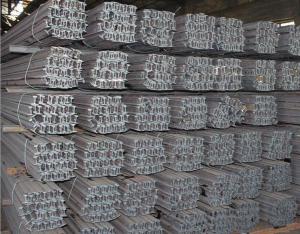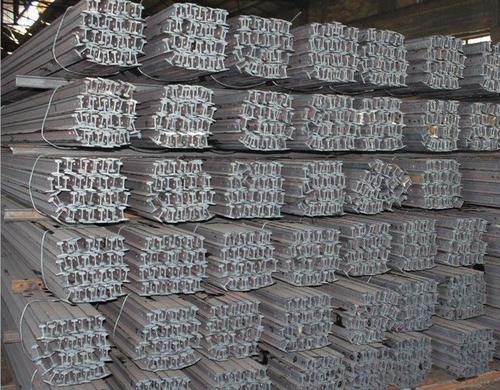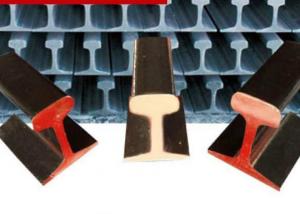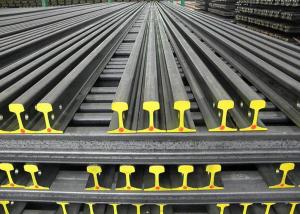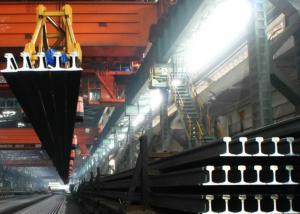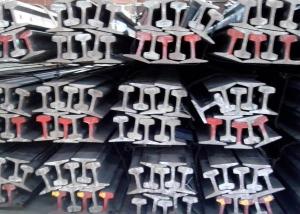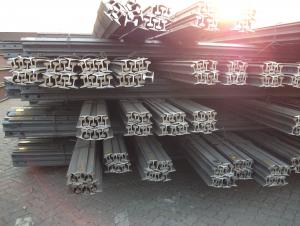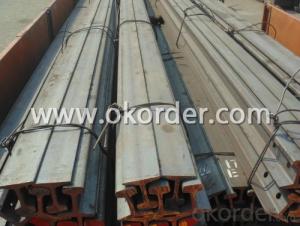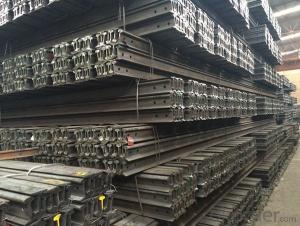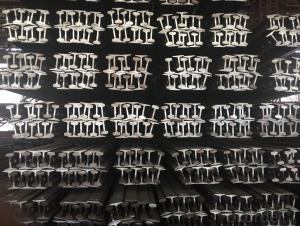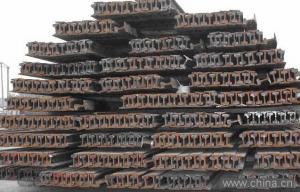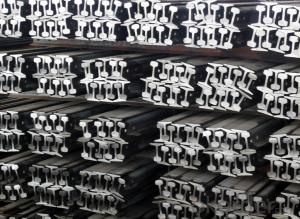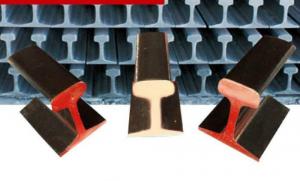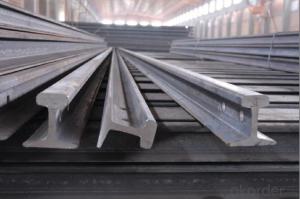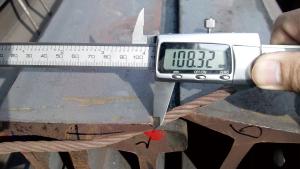Milled Steel Light Rails in High Quality
- Loading Port:
- China Main Port
- Payment Terms:
- TT or LC
- Min Order Qty:
- 50 m.t.
- Supply Capability:
- 5000 m.t./month
OKorder Service Pledge
OKorder Financial Service
You Might Also Like
Product Description:
OKorder is offering Milled Steel Light Rails in High Quality at great prices with worldwide shipping. Our supplier is a world-class manufacturer of steel, with our products utilized the world over. OKorder annually supplies products to African, South American and Asian markets. We provide quotations within 24 hours of receiving an inquiry and guarantee competitive prices.
Product Applications:
Milled Steel Light Rails in High Quality are ideal for structural applications and are widely used in forest region, Mines, factories and construction sites laid of the place such as temporary transport line and light motorcycles with line.etc.
Product Advantages:
OKorder's Milled Steel Light Rails in High Quality are durable, strong, and wide variety of sizes.
Main Product Features:
· Premium quality
· Prompt delivery & seaworthy packing (30 days after receiving deposit)
· Mill test certification
· Professional Service
· Competitive pricing
Product Specifications:
Manufacture: Hot rolled
Grade: Q235, 55Q
Certificates: ISO, SGS, BV, CIQ
Length:6m, 12m,12.5m
Package: Packed in bundles and shipped by break bulk or containers.
LIGHT RAIL/HEAVY RAIL | Height (mm) | Bottom (mm) | Head width (mm) | Head height (mm) | Waist height | Bottom height (mm) | Waist thichness (mm) | Section cm2 | Mass: Kg/m |
9 | 63.50 | 63.50 | 32.10 | 17.48 | 35.72 | 10.30 | 5.90 | 11.30 | 8.94 |
12 | 69.85 | 69.85 | 38.10 | 19.85 | 37.70 | 12.30 | 7.54 | 15.54 | 12.2 |
15 | 79.37 | 79.37 | 42.86 | 22.22 | 43.65 | 13.50 | 8.33 | 19.33 | 15.2 |
22 | 93.66 | 93.66 | 50.80 | 26.99 | 50.00 | 16.67 | 10.72 | 28.39 | 22.3 |
30 | 107.95 | 107.95 | 60.33 | 30.95 | 57.55 | 19.45 | 12.30 | 38.32 | 30.1 |
FAQ:
Q1: How many tons of steel products could be loaded in containers?
A1: Usually the steel products are delivered by bulk vessel because of the large quantity and the freight. However, there are no bulk vessel enter some seaports so that we have to deliver the cargo by containers. The 6m steel product can be loaded in 20FT container, but the quantity is changed according to the size, usually from 18tons to 25tons.
Q2: Why buy Materials & Equipment from OKorder.com?
A2: All products offered byOKorder.com are carefully selected from China's most reliable manufacturing enterprises. Through its ISO certifications, OKorder.com adheres to the highest standards and a commitment to supply chain safety and customer satisfaction.
Q3: How soon can we receive the product after purchase?
A3: Within three days of placing an order, we will arrange production. The normal sizes with the normal grade can be produced within one month. The specific shipping date is dependent upon international and government factors, the delivery to international main port about 45-60days.
Images:
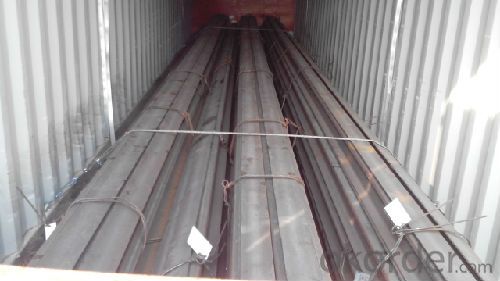
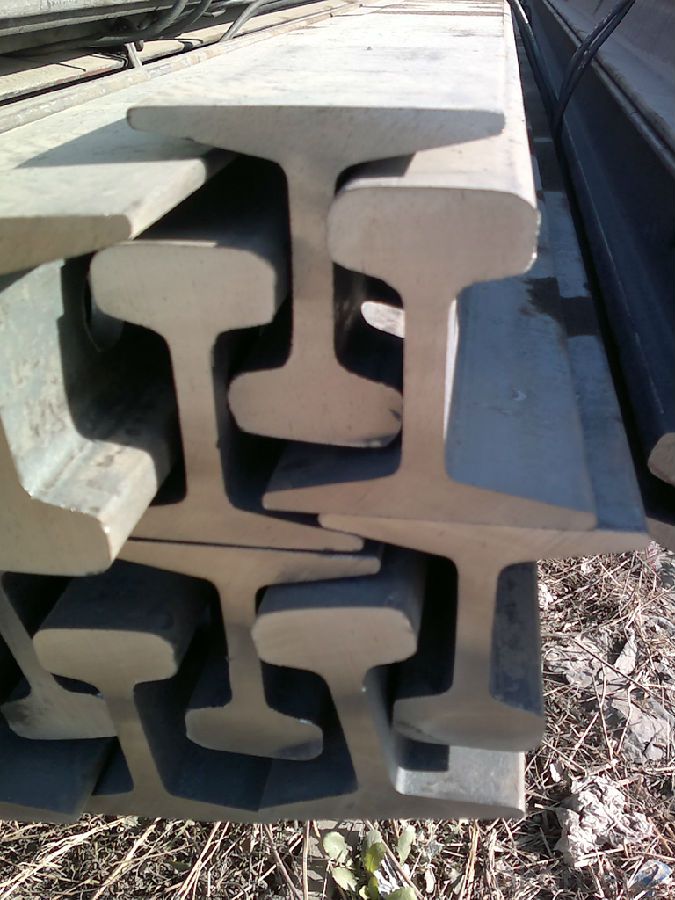
- Q: Can steel rails be customized for specific needs?
- Yes, steel rails can be customized for specific needs. Customization can include adjusting the dimensions, shape, and strength of the rails to meet the specific requirements of different applications and industries. This allows for greater flexibility and efficiency in rail infrastructure design and maintenance.
- Q: Can steel rails be used in urban transit systems?
- Yes, steel rails can be used in urban transit systems. In fact, steel rails have long been the preferred choice for urban transit systems around the world. Steel rails offer several advantages that make them ideal for urban transit systems. Firstly, steel rails provide a smooth and stable track for trains or trams to run on. This smoothness ensures a comfortable ride for passengers, minimizing vibrations and reducing the possibility of accidents or derailments. Steel rails also offer excellent traction, allowing trains to accelerate and decelerate efficiently, which is crucial in urban areas where frequent stops and starts are common. Moreover, steel rails are highly durable and can withstand heavy loads and constant use. This is particularly important in urban transit systems, where trains or trams run frequently and carry large numbers of passengers. Steel rails have a long lifespan and require minimal maintenance, making them a cost-effective choice for urban transit infrastructure. Additionally, steel rails can be easily integrated into existing urban environments. They can be laid on existing roadways or embedded in concrete, minimizing the need for extensive construction work and disruptions to the surrounding areas. Steel rails also have a smaller footprint compared to other track materials, allowing for efficient use of limited urban space. Furthermore, steel rails have proven to be highly reliable and safe in urban transit systems. They have a track record of successful implementation in cities worldwide, ensuring the smooth operation of public transportation networks. Steel rails also contribute to the overall efficiency of urban transit systems by reducing traffic congestion and offering a sustainable transportation option. In conclusion, steel rails are a well-established and suitable choice for urban transit systems. Their smoothness, durability, and reliability make them ideal for providing safe and efficient transportation in densely populated urban areas. The use of steel rails in urban transit systems has been proven effective and advantageous, contributing to the development of sustainable and modern transportation networks.
- Q: What are the different methods used for rail welding on steel rails?
- There are several methods used for rail welding on steel rails, including flash butt welding, thermite welding, and electric arc welding. Each method has its own advantages and disadvantages, but they all aim to create a strong and continuous weld that can withstand the stresses and strains of railway operations. Flash butt welding involves using an electric current to heat the ends of two rail segments, which are then pressed together to form a weld. Thermite welding utilizes a chemical reaction to generate intense heat, which is used to melt a thermite mixture that fills the gap between the rail ends. Electric arc welding involves the use of an electric arc to heat the rail ends, and then a filler material is added to create the weld. The choice of welding method depends on factors such as the rail type, environmental conditions, and the specific requirements of the rail network.
- Q: What are the challenges faced in maintaining steel rails in extreme weather conditions?
- One of the main challenges in maintaining steel rails in extreme weather conditions is the susceptibility to corrosion. In extremely cold weather, for example, the expansion and contraction of the rail can lead to cracks and breaks, while in hot weather, the rails can expand and buckle. Heavy rainfall and snowfall can also cause erosion and damage to the rails, making them more prone to wear and tear. Additionally, extreme temperatures can affect the integrity of the rail bed and the stability of the track, requiring frequent inspections and repairs to ensure safe and efficient train operations.
- Q: How are steel rails protected against seismic events?
- Steel rails are protected against seismic events through several measures. Firstly, the rails are designed to withstand the ground vibrations caused by earthquakes by using strong and durable materials. Additionally, they are anchored firmly to the ground using secure fastening systems to prevent displacement. Furthermore, regular inspections and maintenance are conducted to identify any potential damage or weaknesses in the rails, ensuring timely repairs or replacements if needed. These measures collectively enhance the resilience of steel rails against seismic events, ensuring the safety and stability of railway infrastructure.
- Q: How are steel rails designed to handle thermal expansion?
- Steel rails are designed to handle thermal expansion through a combination of factors. Firstly, the material used in steel rails is carefully selected to have a low coefficient of thermal expansion. This means that the steel is less prone to expanding and contracting with changes in temperature. By choosing a material with a low coefficient of thermal expansion, the rail is better able to withstand the stresses caused by thermal fluctuations. In addition to the material selection, rail design also plays a crucial role in managing thermal expansion. The rails are typically laid with small gaps called expansion joints between them. These gaps allow for the rail to expand and contract freely without causing excessive stress or buckling. The length of the expansion joints is carefully calculated to provide enough space for expansion while still maintaining the integrity and stability of the rail system. Furthermore, the rail fastening system is designed to accommodate thermal expansion. The fasteners that hold the rail in place are often designed to allow slight movement, allowing the rail to expand and contract without causing damage. This flexibility in the fastening system helps to minimize any stresses or strains on the rail caused by thermal expansion. Overall, the design of steel rails takes into account the potential for thermal expansion and incorporates features such as material selection, expansion joints, and flexible fastening systems to ensure the rail can handle these temperature-induced changes without compromising its structural integrity.
- Q: What are the advantages of using steel rails in railways?
- The advantages of using steel rails in railways include their high strength and durability, which allows them to withstand heavy loads and frequent usage. Steel rails also have excellent track alignment and stability, leading to smoother rides and reduced maintenance needs. Moreover, steel rails offer superior resistance to wear and corrosion, resulting in longer lifespan and lower maintenance costs. Additionally, steel rails provide better electrical conductivity for signaling and power transmission purposes.
- Q: Does the crane use the touch wire or the rail directly?
- The sliding rail line (fixed part, and is connected to a power supply rail, often by a single 4m/ or 6 meters long root / root connected together), the collector (or within the sliding part, can slide wire track and sliding contact with the copper strip to take power, for the collector is connected with the mobile motor).
- Q: What is the lifespan of a steel rail?
- The lifespan of a steel rail can vary depending on various factors such as maintenance, usage, and environmental conditions. On average, a well-maintained steel rail can last anywhere between 30 to 50 years before needing replacement.
- Q: What is the role of steel rails in ensuring train stability?
- Steel rails play a crucial role in ensuring train stability as they provide a solid foundation for the train to travel on. The weight of the train is distributed evenly across the steel rails, which helps to maintain balance and prevent the train from derailing. One of the main functions of steel rails is to guide the train and keep it on track. The rails are designed to have a specific shape, with a flange on the inside of the railhead, which fits into the groove of the train's wheels. This flanged wheel-rail interaction helps to keep the train aligned and prevents it from deviating off the track. Furthermore, steel rails provide a smooth and continuous surface for the train to move on. This reduces the friction between the train's wheels and the rails, allowing the train to travel at high speeds with minimal resistance. This smooth surface also helps to minimize vibrations and bumps, providing a comfortable ride for passengers. In addition to stability, steel rails also contribute to the overall safety of train operations. They are designed to withstand heavy loads and provide resistance against wear and tear. Regular maintenance and inspection of the rails ensure that any defects or damages are promptly identified and repaired, preventing accidents and ensuring the safe passage of trains. Overall, steel rails are essential for train stability as they guide the train, distribute its weight, reduce friction, and provide a safe and smooth surface for the train to travel on. Without steel rails, trains would struggle to maintain stability and safety, making them an indispensable component of railway infrastructure.
Send your message to us
Milled Steel Light Rails in High Quality
- Loading Port:
- China Main Port
- Payment Terms:
- TT or LC
- Min Order Qty:
- 50 m.t.
- Supply Capability:
- 5000 m.t./month
OKorder Service Pledge
OKorder Financial Service
Similar products
Hot products
Hot Searches
Related keywords
